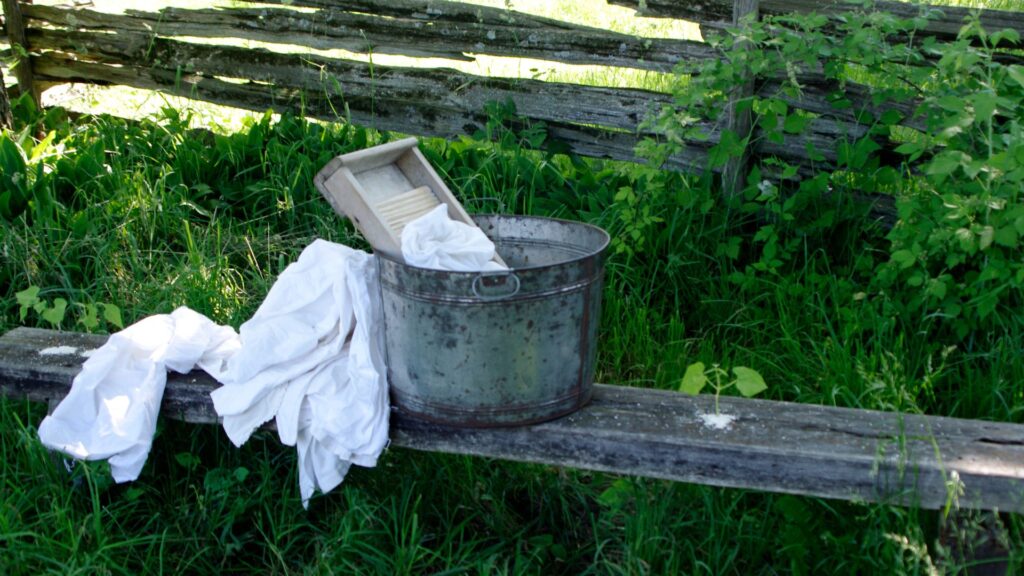This article is part of our short series, “Laundry through the ages.” Last time, we took a quick look at laundry’s fascinating evolution across the centuries. In this second installment, we discuss the earliest evidence of clothes cleaning practices that history has left us. Enjoy!
Prehistory
By definition, the prehistoric period predates recorded history. This means that our ancient ancestors unfortunately did not leave us any handy tips on how to clean wooly mammoth pelts. However, absence of evidence is not evidence of absence and we do know that the key factors necessary for doing laundry were all present in prehistory:
Prehistoric humans generally had access to natural cleaning substances such as sand, ash, or animal fat, as well as to plants with soap-like properties; they had access to water in the form of rivers, lakes, and natural springs; they had access to rocks and wood with which to beat or rub clothing to break down stains; and they had access to warm sunshine for outdoor drying. Nevertheless, the nomadic and often precarious lifestyle of the time likely meant that having clean garments was not a major concern.
Antiquity
Ancient civilizations were more interested in hygiene than their prehistoric predecessors. The ancient Babylonians appear to have been the first to use natural soap; the earliest recipe is inscribed on a clay tablet from around 2800 BC. The ancient Egyptians used soap made from a combination of animal and vegetable oils and salt, along with natron, a mineral alkali that acted as a purifying agent. In ancient China, clothes were washed using ashes obtained from plants and shells, which served as a potent natural detergent.
The ancient Greeks highly valued cleanliness and are credited with the invention of a very early form of the shower, but it was the Romans who ultimately gave soap its name. According to legend, rain water running down from Mount Sapo, where animals were sacrificed, blended with animal fats and wood ashes to form a mixture that proved to be beneficial for clothes and skin.
But the Romans didn’t stop there—they also developed the ancestor of the laundromat. Known as fullonicas, these establishments soaked dirty clothing in large basins filled with water and urine, whose high ammonia content functioned as a natural cleanser, along with natron and various kinds of clay. Workers known as fullones stomped on the clothes as they soaked in order to extract a maximum amount of impurities. The items were then wrung out, sun-dried, brushed, and could even be whitened using a fine white chalk known as Cimolian earth.
In conclusion, while advances in technology have certainly made the laundry process faster and more practical than it once was, the process itself has been around for nearly as long as clothing.
